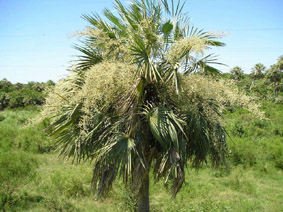|
SOWING FOR BEES - BEEKEEPING AND CATTLE PROJECT SAN SEBASTIAN
Patricio Crespo
patriciocrespo@yahoo.com
Chivilcoy - Buenos Aires - Argentina

Dr. Patricio Crespo presents a synthesis of his experience in the sowing of pastures for beekeping and cattle forage, developed during the last years in the North of Buenos Aires Provice, area of Chivilcoy. The work is on-line with the experiences begun by Mr. Sacavino and those we published in "Espacio Apícola" 65th of Héctor Suriak and Herman Zorzin, both in the Santa Fe Province.
Patricio Crespo points out that in our country one of the few works carried out in function of cultivation with double purpose (cattle and Beekeeping) and with scientific method, is the Alfalfa test carried out by Gabriel and Fernando Vairolatti published in "Espacio Apícola" 52nd April 2002 and that that year was presented in the Fair and Beekeeping Meeting from the Center of the Country, in San Francisco.
Due to the lack of appropriate bibliographical material that relate the variables of beekeeping and cattle production valued in a reasonable balance, Dr. Crespo offers us a valuable contribution like a tool for those who want to begin in this practice, to contribute to the just started debate and leaving implicitly outlined the challenge of an integrated agriculture, in front of the proliferation of technological closed “packages”, as the soya or the blueberry that look for eliminating any interference and they destroy the ecosystems and with them, the beekeeping.
The work that includes different mixtures of recommended pastures, comparative graphics of grass production, meat and development of the beehive, illustrative pictures and more, includes the following subtitles:
- INTRODUCTION
- PLANING THE BEEKEEPING AND CATTLE PROJECT
- IMPORTANCE OF THE POLLEN IN THE BEEHIVE
- SCIENTIFIC CONFIRMATION OF THE TEST
- PRODUCTIVE DATA OF THE FIRST TEST
- FIRST RESULTS
- MOST RECENT TEST
- RESULTS OF THE RECENT TEST
- SUGGESTIONS TO THE BEEKEEPER
- CONCLUSIONS
- RECOMMENDED BIBLIOGRAPHY
To top
ECOLOGICAL BEEKEEPING - ORGANIC CERTIFICATION
- Griselda Jullier
gjulier@letis.com.ar
- Santa Fe - Argentina
With the appropriate academic formation to speak about foods and having worked during many years in the Foods Laboratory of Santa Fe Province, the biochemist Griselda Jullier has been studying from a privilege site the use of rules and quality controls that the European Union has imposed since 1997.
Since she started to work with honey, she's been near of "Espacio Apícola" magazine and the "Fair and Beekeeping Meeting from the center of the country”.
She began with the food control, then she started with the pallinological identification of honeys and the its regional characterization from Santa Fe Province.
Nowadays she is presenting a synthesis of her dissertation of this year, about the certification of organic honeys, from the point of view of Letis CORP., the certification company she works for.
The article includes a description of all the requirements for the certification of organic products referred to the following topics:
- Why produce organic?
- Statistics
- Exports and Imports of organic honey
- The Organic Certification
- Administrative requirements
- The organic inspection
- The organic production
- Alimentary security applied to the organic beekeeping production
- Hazard Analysis and Control of Critical Points (HACCP)
- DANGERS CLASSIFICATION
- Standard and critical limits
To top
|

 ARGENTINE BEEKEEPING MAGAZINE
ARGENTINE BEEKEEPING MAGAZINE


 inform@apicultura.com.ar
inform@apicultura.com.ar